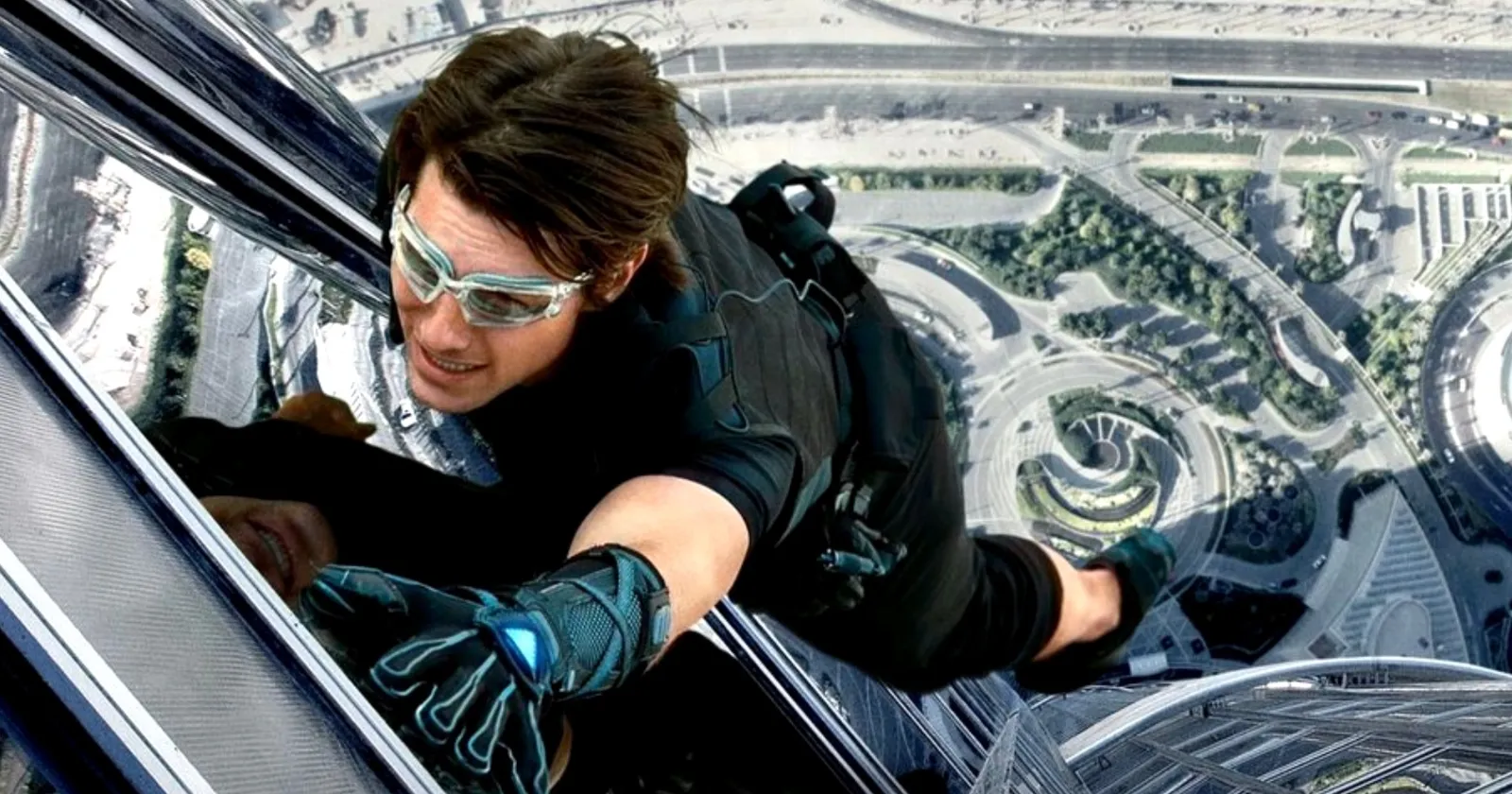Mission: Impossible – Ghost Protocol (2011) is not just one of the best entries in the franchise—it’s one of the best action films of the 2010s. It reenergized the series with a bold new direction by Brad Bird, brought in a fresh ensemble, and delivered set pieces that rival anything else in modern blockbuster cinema. Tom Cruise returns once again as Ethan Hunt.

‘Mission: Impossible – Ghost Protocol’ Movie Review
Mission: Impossible – Ghost Protocol is where the franchise truly found its modern identity. Directed by Brad Bird in his first live-action feature after The Incredibles, The Iron Giant, and Ratatouille, this fourth installment takes a massive leap forward in terms of scale, tone, and ambition. It doesn’t just raise the bar for the Mission: Impossible series—it redefines it, setting the stage for everything that would follow.
From the very first minutes, Ghost Protocol feels larger-than-life. The centerpiece of the film—Tom Cruise’s Ethan Hunt scaling the Burj Khalifa—isn’t just a standout moment in the franchise; it’s one of the most breathtaking action set pieces of the 21st century. The sequence is both exhilarating and terrifying, made all the more compelling by the real-world stunt work that Cruise famously insisted on doing himself. It’s not just movie spectacle—it’s movie myth-making.
The plot hinges on a classic spy-thriller setup. After the Kremlin is bombed in a covert mission gone wrong, Ethan Hunt and his IMF team are blamed and disavowed under the “Ghost Protocol” directive. With no support and no backup, Hunt has to go rogue (again) to uncover the real perpetrators and prevent global catastrophe. It’s standard Mission: Impossible fare on paper, but in execution, Bird infuses it with energy, humor, and a visual style that separates it from anything that came before.
The film also marks a turning point in terms of character dynamics. Simon Pegg’s Benji returns in a larger role, providing not just comic relief but genuine camaraderie. His presence, alongside Jeremy Renner’s William Brandt and Paula Patton’s Jane Carter, helps build out an ensemble that brings new texture to Ethan’s world. Pegg, in particular, is a game-changer for the tone of these films—infusing them with just the right level of levity without undercutting the stakes.
What makes Mission: Impossible – Ghost Protocol stand out even more is how seamlessly it transitions the franchise into a new era without sacrificing what made the earlier films work. While Mission: Impossible III introduced emotional stakes and a more grounded tone, Ghost Protocol goes all in on set pieces, global spectacle, and a more team-oriented approach. It balances seriousness and silliness better than any previous installment, and you can feel the influence of Christopher McQuarrie (who would take over directing duties with Rogue Nation) beginning to creep in, particularly in the film’s pacing and character interplay.
Brad Bird’s fingerprints are all over this movie, though, and it’s fascinating to see a director known for animated storytelling bring that same sense of timing and visual storytelling to live action. The action scenes are clean, coherent, and loaded with creativity. Even beyond the Burj Khalifa, sequences like the sandstorm chase and the climactic showdown in an automated parking garage are crafted with precision and flair.
READ MORE MOVIE REVIEWS: The Social Network, Incendies, Coraline
Mission: Impossible – Ghost Protocol is not just one of the best entries in the franchise—it’s one of the best action films of the 2010s. It reenergized the series with a bold new direction, brought in a fresh ensemble, and delivered set pieces that rival anything else in modern blockbuster cinema.
Score: 8/10
Mission: Impossible – Ghost Protocol (2011)
- Cast: Tom Cruise, Paula Patton, Simon Pegg, Jeremy Renner, Michael Nyqvist, Ving Rhames, Michelle Monaghan
- Director: Brad Bird
- Genre: Action, Adventure, Thriller
- Runtime: 133 minutes
- Rated: PG-13
- Release Date: December 21, 2011
- Movies Like Mission: Impossible – Ghost Protocol: Mission: Impossible II, Blackhat, The Creator, More Movies Like Mission: Impossible
Read More Reviews for Mission: Impossible Movies
Cinephile Corner has reviewed the following Mission: Impossible movies: